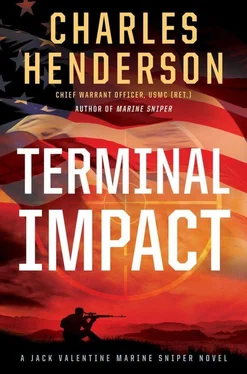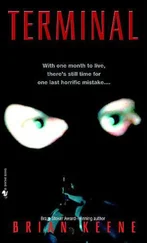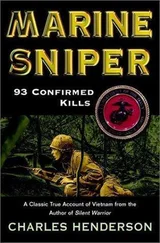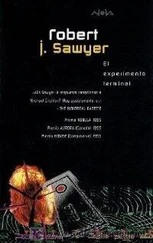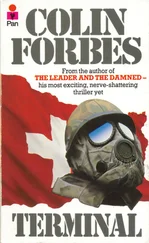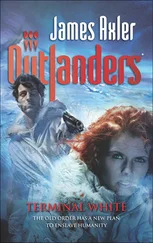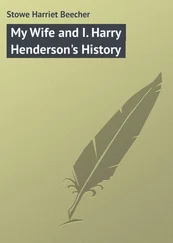“How about you, Freddie?” Blevins called toward the rear seat, where the third member of the low-life crew stood through an open sunroof, a Heckler and Koch HK417 automatic .30 caliber battle rifle in his hands. Rather than the M4 carbine or any other of the lighter-caliber 5.56-millimeter variants of the M16 platform, all Malone-Leyva operators carried the hard-hitting, longer-reaching HK black gun that fired the 7.62-by-51-millimeter NATO round.
“Does a nun have a cunt?” he said, dropping down and taking the bottle.
“Fuck if I know,” Cooder said, after Fred Stein took his shot of clear hard liquor.
“Well they do, and I’d fuck one,” Freddie said, and looked behind their Escalade to see the low-ranking State Department’s US Agency for International Development, USAID, civilians and their suitcases, heading to the airport for the night flight back to the world. “Looks like we’re about ready to rumble.”
“Yeah,” Ray-Dean said, and gave Gary Frank a tap on the shoulder. “Let’s move out.”
Two other Malone-Leyva armored stretch Escalades with full crews and two State Department security specialists fell in behind Ray-Dean and his boys. Another Malone-Leyva gun wagon manned with three machine-gun-wielding contract operators followed at the tail end, providing rear guard.
The street outside the embassy gates had filled with afternoon traffic, and the sidewalks were jammed with shoppers in the relative safety of the International Zone, where stores operated and life seemed nearly normal, except for the occasional car bomb and sniping.
Down the street, a taxi had pulled to the curb and had its hood up. The driver had the breather filter off the air intake, trying to adjust the mixture. He had the engine running, sputtering and coughing.
As he increased the airflow, the engine began to smooth out, until he went too far. Then he quickly reversed the adjustment, enriching the mixture, and a loud pop came from the tailpipe.
“You hear that?” Freddie said, shouldering his rifle as they started down the street. People on the sidewalks had stopped in their tracks, reacting to the first loud pop.
Then the taxi driver turned the mixture again and caused two more loud backfires, one after the other.
“We’re under siege!” Ray-Dean yelled, and instead of hitting the gas, Gary Frank hit the brakes.
Freddie Stein didn’t wait for orders, but opened fire and emptied his first magazine before Cooder-with-a-D could get his door open and start firing, too.
“Light ’em up!” Ray-Dean yelled, tripping out the car door, and started hosing people on the streets with his HK417 assault rifle.
Like clockwork, Gary Frank pissed his pants and soaked the driver’s seat with urine reeking of Prednisone and other cooked-up steroids he’d been taking, trying to bulk up with the boys.
Behind the lead vehicle, guns went out and operators searched for targets but found none. No one had shot at the convoy. A taxi backfired three times and the net result left thirty-five dead civilians on the streets of Baghdad.
Ray-Dean and Freddie never stopped shooting until a heroic State Department security officer maneuvered behind the lead Escalade and took the rifle out of Blevins’s hands.
He pointed the black gun up at Fred Stein, and yelled, “Stop shooting, you idiot! Do you see any incoming bullet marks on anything?”
“They’re shooting!” Freddie insisted. “I heard three shots!”
“Me, too,” Gary Frank chimed in, now out of the car, his pants dripping wet. “I was inside driving.”
Ray-Dean took out his bottle of vodka and finished it, in front of everyone.
With the revelations of the First Battalion, Fifth Marines’ operation plan to the forces of al-Qaeda Iraq, Abu Musab al-Zarqawi and Abu Omar Bakr al-Nasser sent word far and wide, urging jihadi faithful from all corners of the earth to come, join them in a great victory over the American infidels. Men and women, even boys and girls, from Europe, Asia, North Africa, and other nations of the Middle East, saw the messages on the al-Qaeda Web sites, and flocked to Syria and southwest Turkey. Day by day, sympathetic zealots filled the insurgents’ ranks; many of them had never before seen war or had even held a rifle. Al-Qaeda Iraq’s numbers grew by thousands overnight.
Twenty-six gunmen, some seasoned and some green recruits to Omar Bakr al-Nasser’s army of Jamaat Ansar al-Sunnah lay waiting for the eight Marine Scout-Snipers to round the long turn in the dry streambed that ran eastward to rally point Whiskey Tango Foxtrot, another mile away.
Behind them and outside their flanks, another twenty-six al-Sunnah, al-Qaeda fighters waited in reserve, as reinforcements, should the American strike force land early. Before the reinforced ambush could slaughter the eight Marines running into their grist mill, then depart intact. It all boiled down to timing, and that depended on how fleet of foot were the approaching lambs.
Jamal al-Hakim, captain in command of the overall fifty-two-man force, hid in a nest of rocks and earth mounds just behind his ambushing force’s left-flank machine gun, listening to the American command channel. He could not monitor the Marines’ covered intercom because that frequency did not appear on the operation plan. Elmore Snow had long ago decided that internal intercom should be exactly that, internal. He didn’t want anyone outside his unit hearing the often-colorful chatter among his operators.
Hakim had five machine guns. Three he had placed at each end and in the apex of his ambush. The other two waited in reserve, ready to move up, should he need them. He had planted the ambush along a gentle curve of the wadi, giving his center machine gun a clear field of fire a hundred yards down the streambed. The captain’s right-flank gun had the shortest field of fire but covered the dead space at the other end of the curve. His left-flank gun covered nearly the same long kill zone as the center gun.
A pair of Claymore mines at the head of the ambush, just beneath his machine guns, ensured that once the Marines had filled the kill zone, death would come to them sudden and sure. The antipersonnel explosives made certain that no one penetrated their line, should the Americans turn into the center of fire and charge at them.
Jamal’s only regret was that he did not have more than the two Claymores. Ideally, he would have had two more at the tail end of his kill zone. A deadly door he could close.
Lined shoulder to shoulder between the machine guns, fighters with Russian assault rifles waited hungrily. Captain Hakim had told them to exercise great patience because the Marines would likely spread their intervals. Even if the lead members of the team moved past them in the primary kill zone, the reserves could kill those few. He wanted all eight inside the lane before anyone opened fire.
Lying with the center machine gun, a jihadi with a small digital video camera focused his lens on the kill zone. Just as they had done last year, they would post this triumph over these shayatin mukali , painted devils, on the World Wide Web for all of sympathetic Islam to see.
Two men down, an especially anxious gunman called Ismail, a Sunni boy of seventeen from a village on the south side of Karbala, listened to the man with the camera chanting Allahu Akbar on the sound track as he rolled video, hearing the Marines approach. Ismail began chanting, too.
As Ismail blinked, staring down his gunsights, he saw the first Marine running fast into the kill zone. At that instant, the voices filling his heart with Allahu Akbar and visions of Paradise, the young man forgot everything his captain had stressed about waiting.
“Allahu Akbar!” Ismail cried as his pounding heart sent blood surging through his brain, and he opened fire.
Читать дальше
